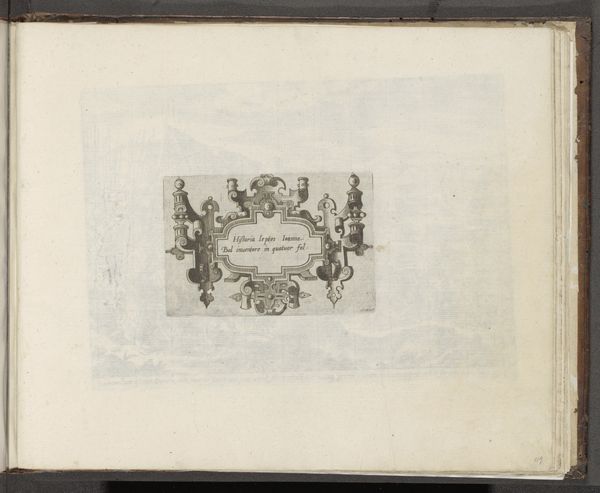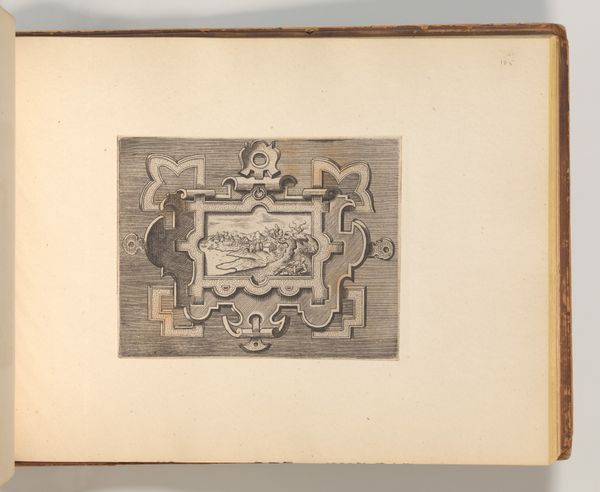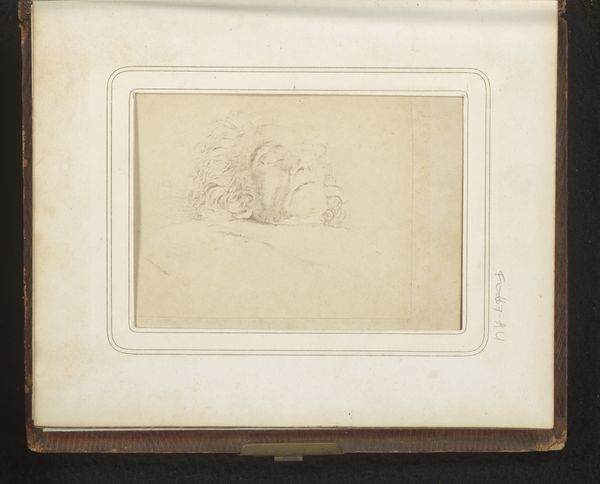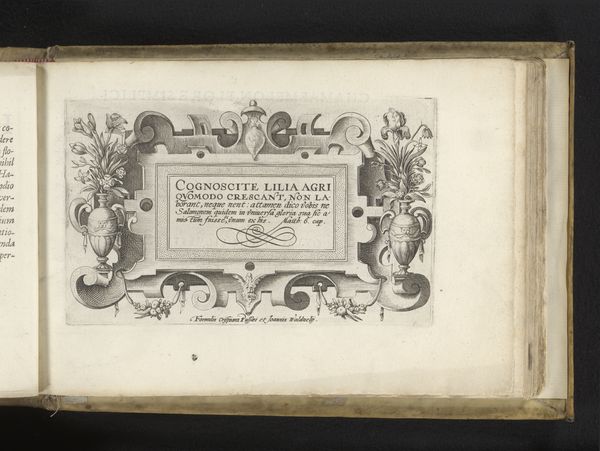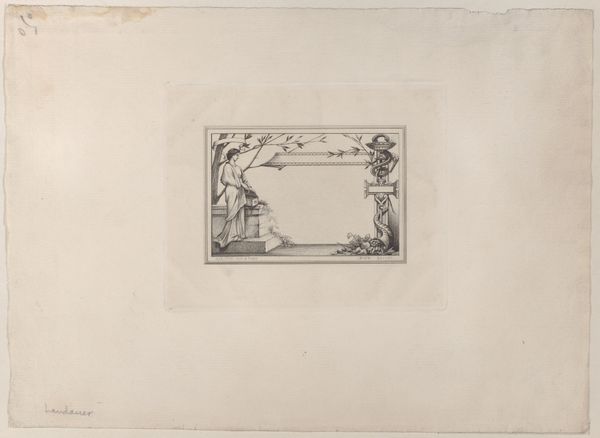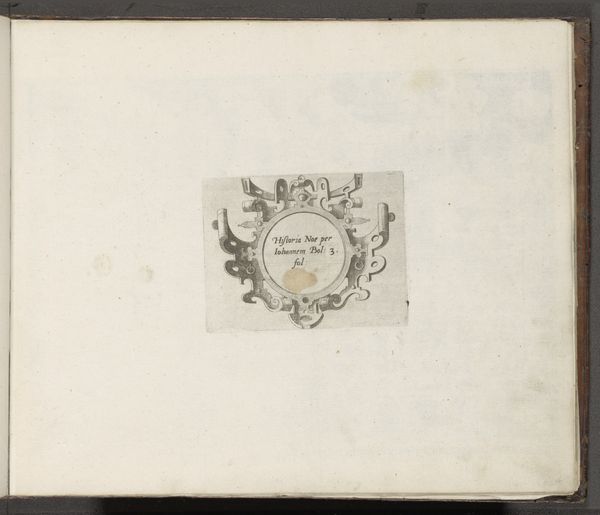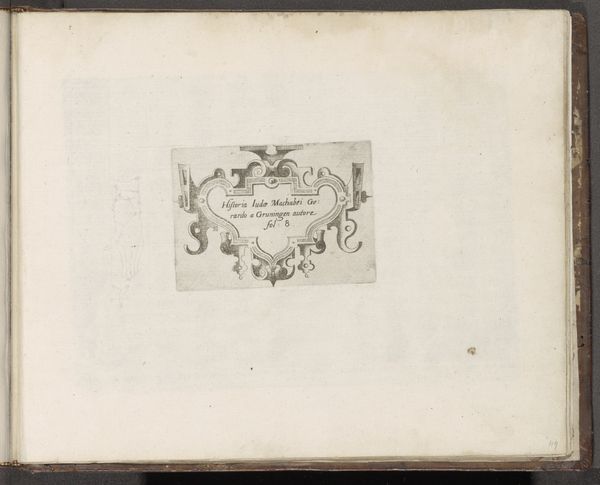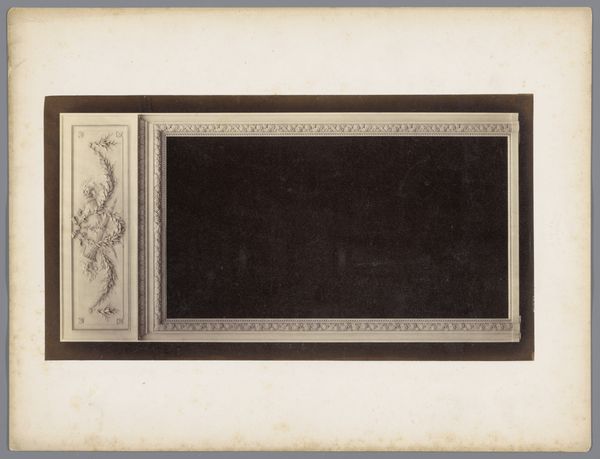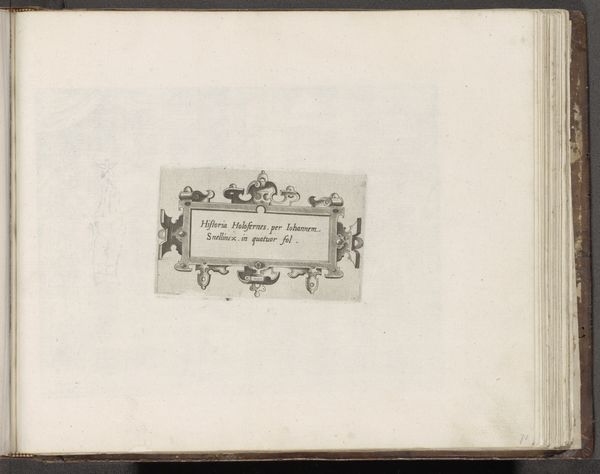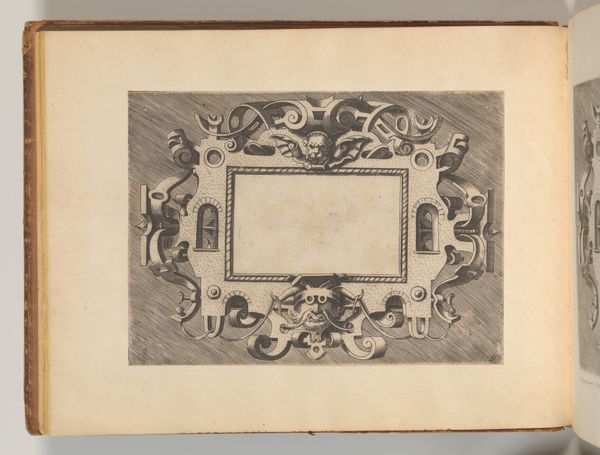
Fotoreproductie van een ontwerp van drie putti die een titelblad omhooghouden door J. Carpey before 1858
0:00
0:00
drawing, print, paper, engraving
#
drawing
#
allegory
#
ink paper printed
# print
#
figuration
#
paper
#
line
#
academic-art
#
engraving
Dimensions: height 125 mm, width 160 mm
Copyright: Rijks Museum: Open Domain
Curator: So, here we have a photographic reproduction of a design, probably intended for a title page. It is attributed to J. Carpey and thought to have been made before 1858. The print or drawing features three putti holding up what appears to be a title. Editor: My first impression is whimsical, almost dreamlike. The sepia tone lends a faded, antique quality, and those little cherubs seem to float rather than stand, cradling this ephemeral title. It evokes a sense of old-world elegance and the kind of tender care one associates with classical allegories. Curator: Absolutely. The putti are archetypal figures used throughout art history to symbolize love, innocence, or divine presence. The allegorical aspect points us towards a broader social history as well, perhaps linked to notions of childhood, sentimentality, and how innocence was marketed and reproduced. Editor: You know, I wonder if those chubby cherubs were always considered "innocent". There's a mischievous glint in the implied lines of their faces that makes me question what they're really up to. Maybe they're not just holding the title, but perhaps playing with it, revealing it with a smirk. I’m feeling an ambiguous tension between playful energy and structural form. Curator: That’s a fascinating point. We can also consider this work as part of a larger tradition of the commodification of emotion. How do prints like this contribute to the development of sentimental culture, and what role do gendered power dynamics play? Were women and children considered the target market of this type of allegorical representation? Editor: Exactly. It raises the question, what kind of story would these cherubs like to write instead? What untold narratives lie beneath this official 'title' they present? The possibilities are deliciously rebellious. Curator: Well, looking closely at the composition within the context of its period allows us to examine broader histories of representation, class, gender, and commerce. Editor: Precisely! This glimpse into the past stirs the desire to rewrite the story. Thanks for that, let’s go grab some tea.
Comments
No comments
Be the first to comment and join the conversation on the ultimate creative platform.
